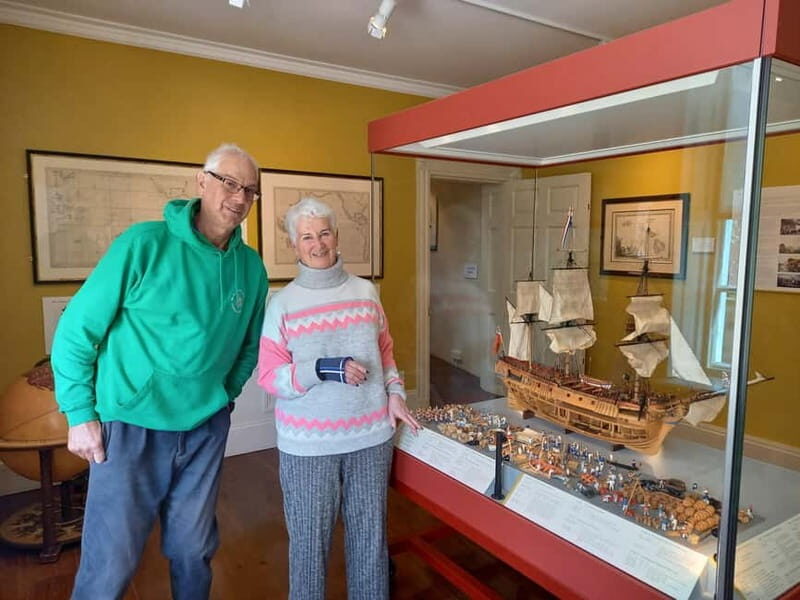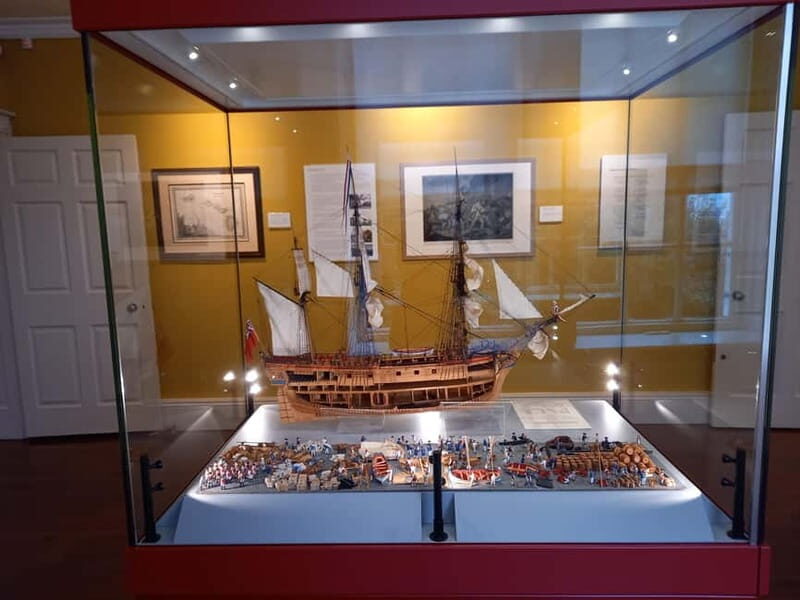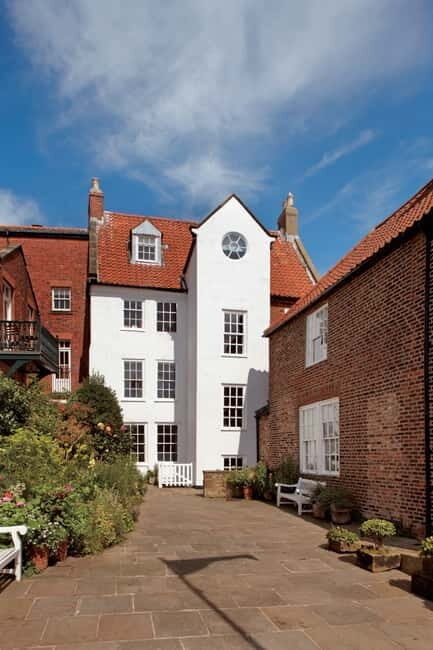If you’re a history buff or simply love exploring maritime legends, visiting the Captain Cook Museum in Whitby offers a fascinating glimpse into the life of one of Britain’s most famous explorers. While many travelers might pass through Whitby for its seaside charm and the iconic abbey, this museum provides a dedicated space to understand Cook’s voyages and his connection to this historic fishing port.
What makes this experience stand out? First, we appreciate how the museum’s location in the only surviving building linked to Cook adds an authentic touch. Second, the impressive collection of original letters and ship models provides a tangible connection to the past. On the downside, the small size of the historic house can get a bit crowded during peak times. This activity suits those with a keen interest in maritime history, exploration, or Victorian-era Britain, and is perfect for travelers seeking a quiet, educational stop that’s both accessible and deeply authentic.
Key Points

- Historic Setting: The museum resides in a 17th-century house linked to Captain Cook’s early life.
- Authentic Artifacts: View original letters from Cook and notable figures like King George III.
- Ship Models: See detailed, Whitby-built models of Cook’s ships, crucial for understanding his voyages.
- Gardens and Atmosphere: Enjoy a peaceful garden that was once a working yard for maritime businesses.
- Educational Value: Insightful exhibits on Cook’s life, Elizabeth Cook, and the home front.
- Accessible & Flexible: Valid for one day, with options to cancel and flexibility to reserve.
Exploring the Whitby: Captain Cook Museum

You can also read our reviews of more tours and experiences in Whitby.
A Historic House with a Maritime Heart
We loved how the museum is situated in the only surviving building connected to Captain Cook—a charming 1688 house on the harborside. Walking into this house, you step back into the late 17th century. The internal decoration, preserved to reflect its period, gives visitors a real sense of what life might have been like for a Whitby master-mariner’s family. It’s a much more intimate way of understanding history than a sterile, purpose-built museum.
You’ll find yourself exploring rooms where James Cook was once apprenticed at age 17, providing a tangible sense of his humble beginnings. The house also offers a glimpse into the home life of Elizabeth Cook and the broader maritime community. This is a highlight for those interested in the personal side of history, not just the voyages.
Original Letters and Personal Items
One of the most compelling parts of the visit is viewing the original letters from Captain Cook and other key figures, including a poignant note from King George III expressing regret at Cook’s death. These letters, on display in glass cases, connect you directly to the people involved in Cook’s story.
The letters from Lord Sandwich, First Lord of the Admiralty, reveal the high-level support for Cook’s expeditions. For travelers, these artifacts offer a rare, intimate look at the correspondence that helped shape history. Reading them feels like peering over the shoulders of 18th-century maritime strategists.
Detailed Ship Models and Artwork
The museum’s collection of Whitby-built ship models is eye-catching. These sturdy collier barks, built on the local docks, were essential to the coal trade but also served as the ships Cook used on his voyages. The models are detailed and give an excellent sense of the scale and design of the vessels that carried Cook across uncharted waters.
In addition, the collection of original voyage artwork, watercolors, and sketches adds depth. Some of these illustrations depict exotic Pacific islands or the ship interiors, providing a visual narrative of Cook’s journeys. An evocative portrait of Lord Sandwich by Gainsborough rounds out the artistic offerings, highlighting the personal connections and support networks behind Cook’s voyages.
More Great Tours NearbyThe Garden and the Working Yard
The museum’s garden, which was once a working yard for a maritime business, offers a tranquil spot to reflect. You can enjoy 18th-century plants that change with the seasons while sitting on a bench. It’s a calming, scenic break from the indoor exhibits, and the garden’s history as a working yard adds authenticity.
Visiting Logistics and Practical Tips
The ticket grants you access for one day, and the museum recommends allowing at least 1-2 hours to fully appreciate the exhibits. Because the house is historic, some areas may have limited accessibility, especially for those with mobility impairments, but the first floor is accessible, and a video tour covers remaining areas.
The museum is located on the harbourside, easily reached by walking from Whitby’s town center. The entrance is marked near the swing bridge, with a courtyard entrance that includes the famous model Kangaroo. Remember, the museum is small, so it can feel a bit cramped on busy days—visiting early or late in the day might enhance the experience.
What’s Included and What’s Not
Your ticket covers admission to the house, garden, and all exhibits, including the original letters, ship models, and artwork. It’s a good value considering the wealth of authentic artifacts and the personal stories they tell.
However, there are no guided tours or audio guides included, so you’ll be exploring independently. Food, beverages, and transportation are also not part of the package, so plan accordingly.
The Visitor Experience
Reviews highlight how knowledgeable staff and well-curated exhibits make this a memorable visit. One reviewer called it “innovative, engaging, and educational,” emphasizing its appeal across ages. Another appreciated the abundance of information, though some noted that it can get crowded during busy times.
The museum’s small size means it’s best suited for those genuinely interested in exploration history or maritime stories, rather than casual sightseeing. Still, the authentic artifacts and personal touches make it a worthwhile stop for most travelers with a curiosity for history.
Who Should Visit?

This museum is perfect for history enthusiasts, maritime fans, or anyone curious about Captain Cook’s early years. It’s also ideal for those looking for a quiet, educational experience outside the busy tourist spots. If you enjoy detailed models, original documents, and learning about the human side of exploration, you’ll find plenty to love here.
It’s less suited for visitors with mobility challenges due to the historic building’s restrictions, but a video presentation helps bridge the gap. Families with older children might enjoy the history, but very young kids could find it less engaging.
Final Thoughts

The Captain Cook Museum in Whitby offers a genuinely authentic peek into the life of an extraordinary explorer. Its historic setting, original letters, and ship models combine to create a compelling narrative that transports you back in time. For a modest price, you gain insights into Cook’s roots, his voyages, and the community that supported him.
This visit is a treasure for those who love detailed, tangible history and appreciate a quiet, contemplative atmosphere. It’s not just about the big voyages but also about the humble beginnings that set the course for one of Britain’s most renowned explorers.
If you’re in Whitby and have even a passing interest in maritime history or exploration, this museum deserves a spot on your itinerary. Its intimate setting, authentic artifacts, and knowledgeable displays make it a rewarding journey into the past—one that’s well worth the time.
You can check availability for your dates here:FAQs
- How long should I plan to spend at the museum? We recommend 1-2 hours to thoroughly enjoy the exhibits and artifacts.
- Is the museum suitable for children? It’s engaging for older children interested in history; very young children might find it less stimulating.
- Can I take photographs? Yes, photography is permitted, but flash photography is prohibited to protect the artifacts.
- Is the museum wheelchair accessible? The first floor is accessible, but some areas may be limited due to the historic nature of the building.
- Do I need to book in advance? Yes, you can reserve your ticket and pay later, offering flexibility in your travel plans.
- What is included in the ticket price? Admission to the house, garden, and exhibits including letters, ship models, and artwork.
- Are guided tours available? No, but the museum provides detailed exhibits and a video tour of restricted areas.
- Where is the museum located? It’s on the harbourside, near the swing bridge in Whitby, with clear signage at the entrance.
- What should I wear or bring? Comfortable shoes are recommended for exploring the historic house and garden.
- Is the museum family-friendly? Yes, particularly for those interested in maritime history, though it’s best suited for older children.
